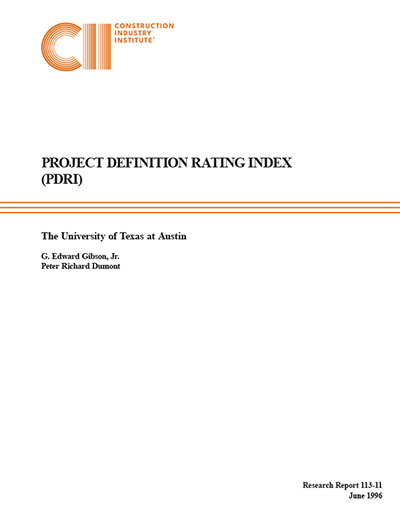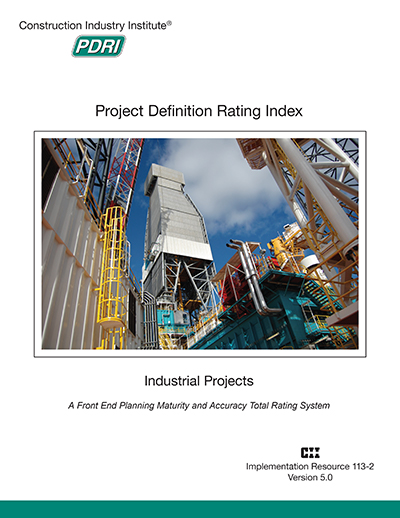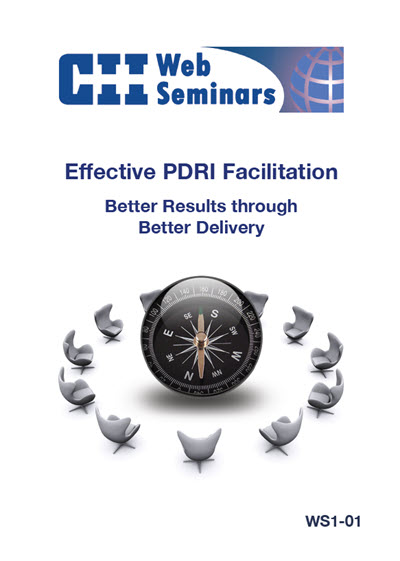
Project Definition Rating Index (PDRI) for Industrial Projects
As demonstrated in research results published previously by CII and in new data presented in this research report, greater pre-project planning efforts lead to improved performance on industrial projects in the areas of cost, schedule, and operational characteristics. Unfortunately, the industry until now has lacked non-proprietary tools to assist in performing this critical stage of the project.
Therefore, the CII Front End Planning Research Team was established to produce effective, simple, and easy-to-use pre-project planning tools so that owner and contractor companies can better achieve business, operational, and project objectives. Specifically, the research team created the Project Definition Rating Index (PDRI) for Industrial Projects, a comprehensive checklist of 70 scope definition elements presented in a score sheet format. The PDRI provides a means for an individual or a team to evaluate the status of an industrial project during pre-project planning and to determine a score that corresponds to its level of definition.
This research report discusses the development of the PDRI including the methodology used to create it, an analysis of its effectiveness in predicting project performance, a description of its potential uses, and a synopsis of the benefits it will provide to the U.S. construction industry.
The list of 70 PDRI elements originally was identified and categorized by the research team through an extensive literature review and an assessment of current industry “best practices.” The elements were weighted in order of importance using input from 54 experienced project managers and estimators. The following 10 elements were found to be most important:
- Products
- Capacities
- Technology
- Processes
- Process Flow Sheets
- Site Location
- P&IDs
- Site Characteristics Available vs. Required
- Market Strategy
- Project Objectives Statement
The PDRI was tested on a series of actual projects to determine if it effectively correlated the level of scope definition effort on industrial projects with the predictability of achieving project objectives. Success ratings were computed for the test projects and plotted against their PDRI scores. A linear regression of this plot yielded a coefficient of determination (R2) of 0.40 between the two variables. This supported the conclusion that PDRI scores could effectively be linked to project success. The validation process also demonstrated that the PDRI was simple and easy-to-use.
The PDRI can provide numerous benefits to the project team. These include: a detailed checklist for work planning, standardized scope definition terminology, facilitation of risk assessment, pre-project planning progress monitoring, aid in communication of requirements between participants, method of reconciling differences between project participants, a training tool, and a benchmarking basis.
In summary, the PDRI can effectively be used to improve the predictability of project performance and, when combined with sound business planning, alignment, and good project execution, can greatly improve the probability of meeting or exceeding project objectives.


